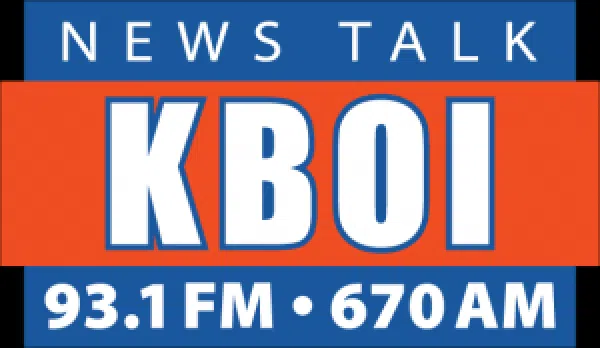This has been a big news week. The midterm elections were Tuesday. The day we spent arguing about what the midterm elections meant was Wednesday. Late Wednesday night, a former Marine with mental problems shot up a bar in Thousand Oaks on College Night and killed 12 people. The Attorney General of the United States was fired on Wednesday. An 85-year-old Supreme Court justice who people joke “needs to stay alive” fell down in her office and broke three ribs Thursday. A CNN reporter in the White House Press Corps had his press credentials taken away after arguing with the president for the umpteenth time. And a 69-year-old guy trying to get women to notice him online went to court to legally change his age. Meanwhile, all week I’ve been thinking about one subject: I really hope Boise State beats Fresno State Friday night.
It’s another of those televised late-night games for the Boise State Broncos. Kickoff is set for 8:15pm and for a change will probably actually happen at 8:15pm, since it’s a Friday night and the game won’t be preceded by another one on the same TV network. It’s going to be fairly cold. And Fresno State is ranked number 16 in the country. They deserve that ranking. They’ve only lost one game this season. Boise State isn’t ranked, but the Broncos have only lost two. However, if you’ve followed Boise State football for some time, you know that anything short of undefeated is disappointing. Seasons with only one loss but a bowl game win are still great, but those two undefeated seasons when Chris Petersen was the head coach are always on my mind. I love a win in a bowl game. And I love a conference championship. But there’s nothing like an undefeated season. Boise State isn’t in a major conference, so an undefeated season doesn’t equal a national championship or even a shot at a national championship. The competition isn’t considered good enough to propel a mid-major team to that top tier. An undefeated season simply means you beat every challenge.
BYU was named the national champion in college football in 1984, back when the championship was still based on a vote. They had two things going for them that year. Nobody else was undefeated, and BYU had scheduled more games than any other team. The standard season in 1984 was 11 games, but you were allowed to schedule an extra game in certain cases. In BYU’s case, they were allowed an extra game for scheduling an away game against Hawaii. The NCAA made that rule a long time ago because it’s expensive to transport a whole team to Hawaii. The Cougars finished the regular season 12-0 with a WAC championship, which meant a trip to the Holiday Bowl in San Diego. And that’s where they went. There was no deal at that time involving New Year’s Day games or the Fiesta Bowl. You went where your conference sent you. In the Holiday Bowl, BYU beat an at-large 6-5 Michigan team 24-17. Even at 6-5, Michigan is a revered program, so the win was impressive enough to vault BYU to the top. It added to the fact that BYU was 13-0, and no other team in the country won more than 11 games.
Penn State was named national champion in 1986 when they went 12-0 as an independent team with no conference affiliation. But in 1994, as a member of the Big Ten Conference, they went 12-0 and were not named national champion. That was in the early days of the Bowl Coalition, when an attempt was made to get the number one and number two teams in the nation to play each other in a bowl game. However, the Rose Bowl wasn’t a member of the original coalition, and it had a contract to play the Pac-10 champion against the Big Ten champion. So, Penn State went to the Rose Bowl and beat Oregon, but Nebraska defeated number three Miami in the Bowl Coalition championship game and was recognized as the national champion. Penn State coach Joe Paterno was quoted as saying it felt odd to be undefeated and not win a championship. That led to the scrapping of the Bowl Coalition and the formation of the Bowl Alliance. But the Rose Bowl wasn’t included in the Bowl Alliance either, so almost the same situation happened in 1997. Nebraska again won the national championship with a win over the number three team, which this time was Tennessee, and number two and Big Ten champion Michigan went to the Rose Bowl and defeated Washington State. The Bowl Alliance was also eventually scrapped, leading to the formation of the Bowl Championship Series, in which they were shrewd enough to finally include the Rose Bowl. If I could go back to 1900, I would petition to create national football playoffs leading to a championship game and scrap the bowl games altogether, but I can’t. Incidentally, the reason they’re called bowl games has to do with the shape of the football stadium at Yale, which was one of the first teams to field a football team. Yale’s stadium was bowl-shaped and was called the Yale Bowl. When it was time to build a place for UCLA to play, they copied the design of the Yale Bowl and created the much larger Rose Bowl, named for the annual Tournament of Roses and Tournament of Roses Parade held there. And when the first postseason game was held, it was held at the Rose Bowl and became known as the Rose Bowl Game, or for short, the Rose Bowl. Long story short, it’s the reason we call all football championships bowl games today, including the Super Bowl.
Anyway, back to Fresno State. The Bulldogs have won only one game in Boise in their history, and it was in 1984 during my sophomore year of college. You may hear people say Fresno State has never won a game against Boise State on the blue turf, and that’s true, because the blue turf wasn’t installed in Bronco Stadium (now Albertsons Stadium) until 1986. The Bulldogs have, however, won three times on the blue turf during bowl games. They beat Virginia in the 2005 MCP Computers Bowl, Georgia Tech in the 2007 Humanitarian Bowl and Northern Illinois in the 2010 Humanitarian Bowl. Fresno State and Boise State were never in the same conference until 2001, when Boise State joined the Western Athletic Conference. That year, the Bulldogs started the season with six consecutive wins, and they were ranked number eight in the nation when Boise State went to Fresno and won 35-30, sacking Bulldog quarterback David Carr on the final play of the game. That was also the moment the two teams became rivals. Carr went on to become the number one pick in the NFL draft the following spring.
Boise State, my alma mater, has had three football teams that are considered their rivals during their Division I era, which began in 1996. Those teams are Idaho, Nevada and Fresno State, and since Idaho has dropped out of Division I-FBS into Division I-FCS beginning with this season, the list might now be cut down to just Nevada and Fresno State. But during the time that I spent as a student at Boise State, its two main rivals were Idaho and Idaho State. In 1982, the year before I started at Boise State, the Vandals beat the Broncos. And that was the beginning of “the streak”. Idaho beat Boise State in every matchup from 1982 to 1993, twelve consecutive games, finally losing in 1994, the Broncos’ second-most successful season in Division I-AA. So as a student, I never saw Boise State beat Idaho. That sort of thing makes you sensitive to the importance of rivalry games. I still get nervous the week Boise State plays Nevada and the week they play Fresno State. So I’ve been nervous all week, and it’s had nothing to do with Republicans and Democrats. I’ve also had a cold, which I believe I caught from an independent.




